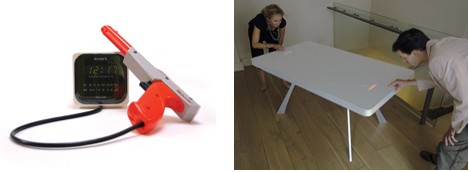DESIGNTIDE 2007
Now that Tokyo Designer’s Week has successfully wrapped up, with the legions of designers catching flights out of Narita its time for a little rest and to sum up for those that couldn’t make it. DesignTide is in its 3rd year and for those who don’t know, is an event that hosts selected designers from all over the globe and presents networking and retailing opportunities for designers and design aficionados alike.
The result is Tokyo’s transformation into one massive design playground with receptions, openings, parties and exhibits that extend to 50 selected boutiques and venues around Aoyama, Harajuku, Roppongi and Maronouchi. DesignTide itself selected the National Stadium in Sendagaya for its main site. At its best yet, DesignTide was a proper fete of furniture and household design, product, fashion as well as graphic design; in short- DesignTide is all about the necessary things in life- what you really need. Declaring “Play” as this year’s theme, the twenty-four featured designers at TideThink inspired us to all be play-ers.
Here’s some of the best of:

Roger Ibars and Moritz Waldemeyer
Roger Ibars‘ work blends two aspects of technology-based culture. On one hand you have old electronic devices, like alarm clocks, from the 1970s and on the other hand, video game controllers from 90s. The result? Idiosyncratic, working objects that make you think twice about user interface while relapsing that video game addiction you once had. Moritz Waldemeyer‘s Pong table at TideThink was perhaps the most gravitational piece at DesignTide. Once visitors discovered the thousands of LEDs integrated under the surface and realized they were playing the ever-classic Pong, blissful play continued all week on the sleek, minimal dining surface.

Heath Nash and Koray Ozgen, Photo: Martin Holtkamp
Heath Nash‘s beautiful hanging plastics, made from recycled material, were one of the most eye catching this year. The South African designer’s love of nature led him to play with synthetic materials and explore their relationship with light. Koray Ozgen‘s Asteroid lamp is made of 24 sides, depending on how it is set, it is an individual polygon. As it is impossible to catch light’s shape, it remains a free form medium for many to work with; it is as if these lights are accommodating and imitating the free form of light itself.
Read more ...




